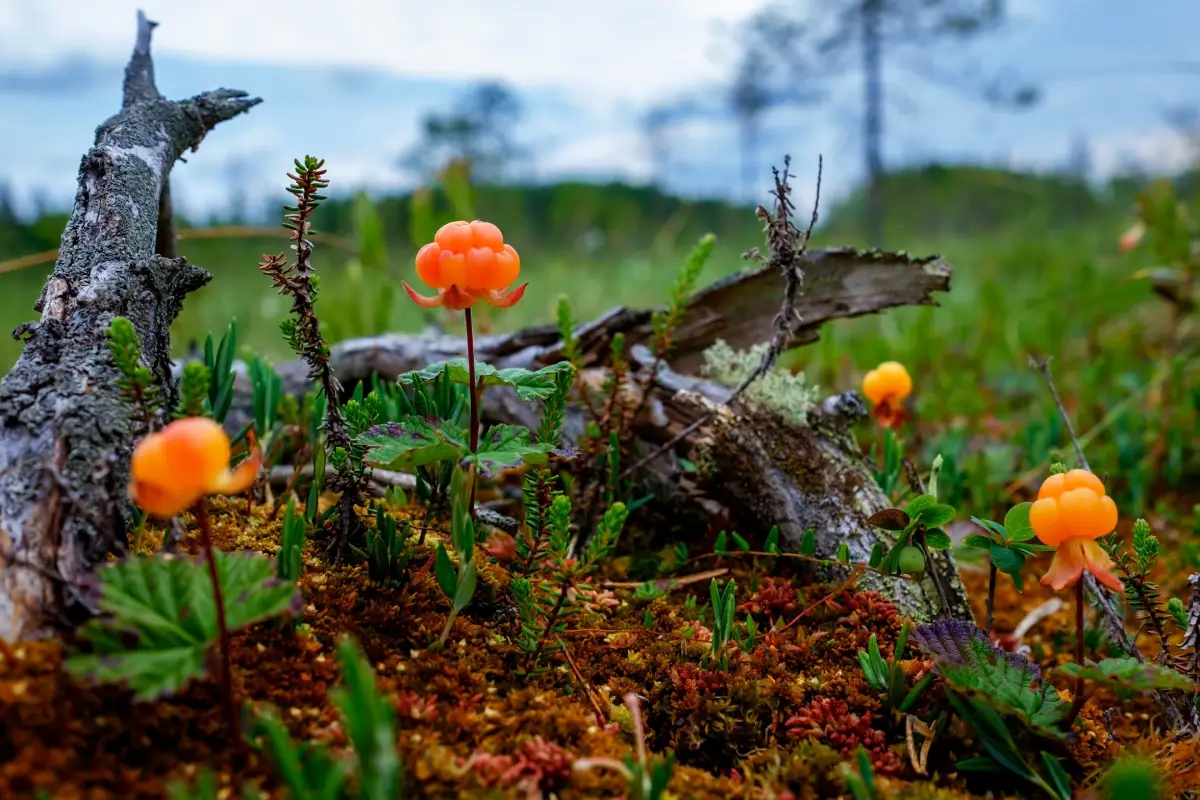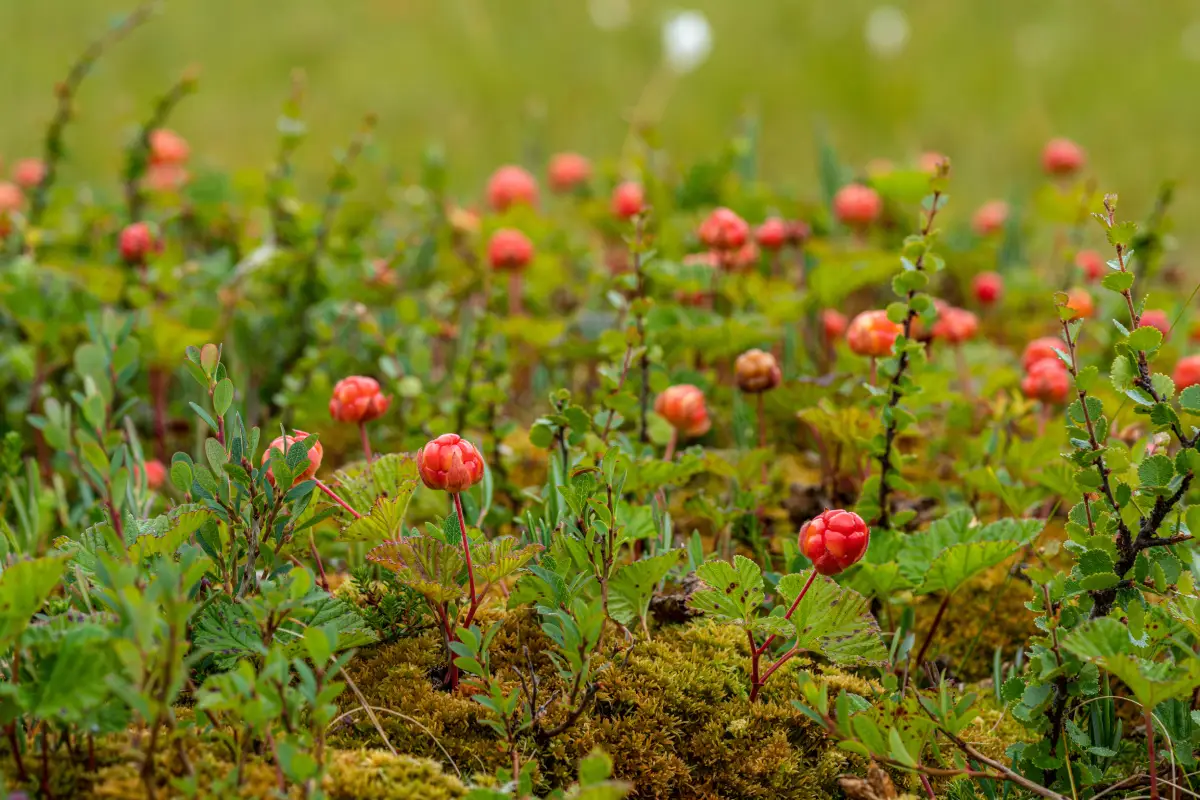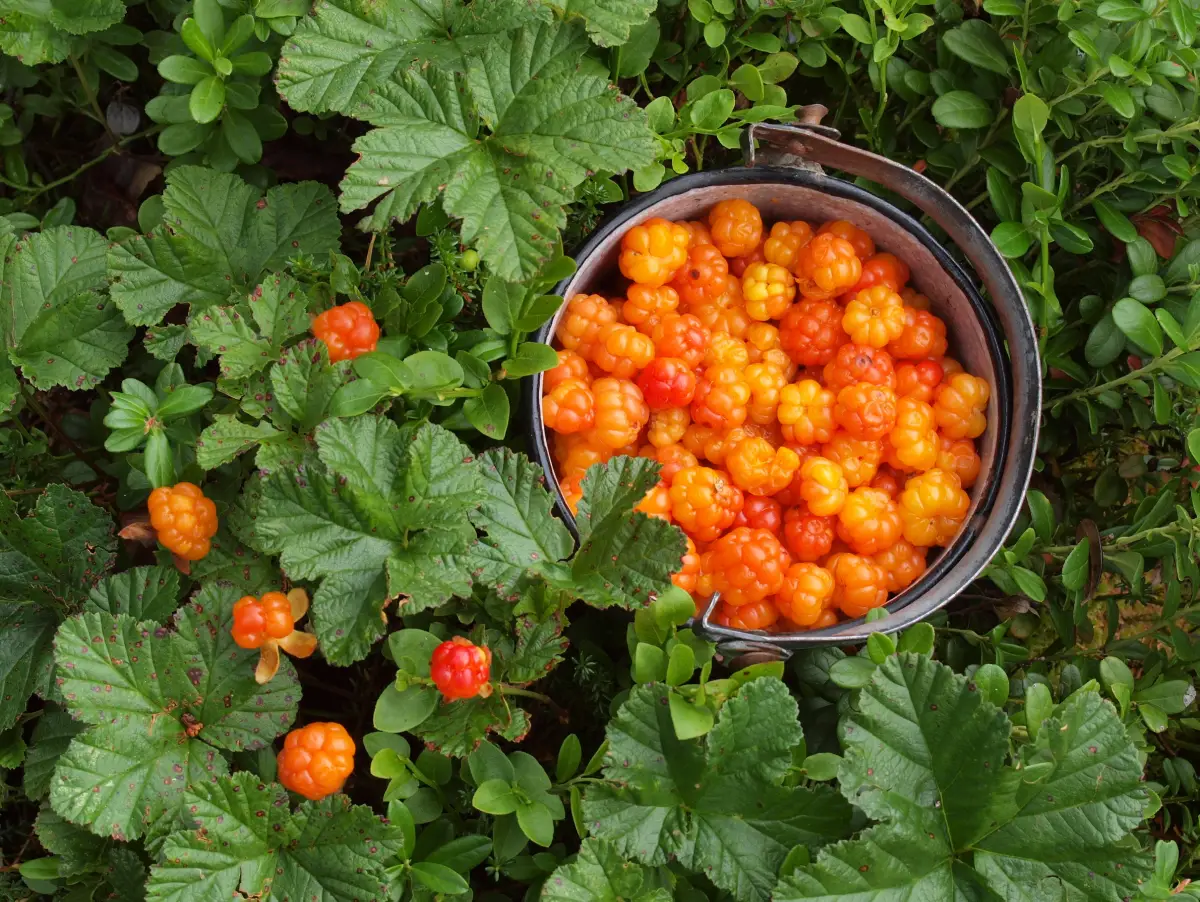
Have you ever seen cloudberries? If not, it’s because they are still relatively unknown. Find out more about the small berries here.
Gardening is your absolute passion, but you’ve never heard of a cloudberry? You are not alone in this. However, that could soon change, as the versatile plant offers something for every taste and is therefore on the rise. Here you can find out everything you need to know about the insider tip from the far north.
Contents [ show ]
💡 Labels
The names for the plant from the far north are as numerous as its advantages. It is also called amber or multberry, as well as blackberry, peat or swamp blackberry. However, botanists refer to it as Rubus chamaemorus. And there is a reason for that. As a relative of the rose, the cloudberry is one of the Rosoideae from the genus Rubus. This means that it belongs to the Rosaceae family or rose family and is the only variety that represents the subgenus Chamaemorus. This word in turn is made up of the ancient Greek terms “chamai” and “moros”, which are translated as “on the earth” and “mulberry” or “blackberry”.
🌍 Origin
In Central Europe you only rarely find cloudberries, and in Switzerland or Austria you don’t even find them at all. Only a few specimens grow in northern Germany and are therefore strictly protected. If you want to explore the wildflower up close in its natural environment, you have to travel to the European, American or Asian north. And there preferably near moors.
Until 1999, the rose family was virtually unknown. Then the Finnish government decided to use the Lapland landmark as the motif when minting its 2 euro coins for the first time. So the cloudberry became more and more popular.
🌿 Appearance and growth
The dark green leaves of the cloudberry are round to bean-shaped and dioecious with five to seven lobes. Their underside is hairy, with irregular edges reminiscent of teeth. Before the plant sheds its leaves in autumn, they turn a bright orange to dark red. Before that, however, the pink to purple buds open and give way to snow-white cupped flowers with a diameter of one to four centimeters and five petals each.
The cloudberry grows between five and 30 centimeters per year, and these dimensions also correspond to its minimum and maximum height. With a width of 15 to 20 centimeters and as a shallow rooter, the robust plant is ideal for small areas, as a container plant or as an edible ground cover .
📋 Short profile of the cloudberry
| Moltebeere (Rubus chamaemorus) | |
|---|---|
| Growth habit: | cushiony and expansive |
| Wuchshöhe: | 15 – 20 cm |
| Location: | Partial shade |
| Floor: | moist, swampy, mossy, humus, permeable to water |
| Special feature: | edible berries, medicinal plant |
| # | preview | Product | Evaluation | Price | |
|---|---|---|---|---|---|
| 1 | Haloppe Pack of 50 Rubus Chamaemorus Plant Seeds for… | Currently no reviews | 2,99 € | To the shop |
⛅ The perfect location for the cloudberry

You should place the cloudberry in partial shade if possible, in a cool location with a maximum of two to three hours of sun per day. The cloudberry also places demands on the soil: it should be as moist, swampy and mossy as possible, humus-rich and permeable to water. Rubus chamaemorus cannot tolerate waterlogging. You should also measure the pH in the soil . The cloudberry thrives particularly well at an acidic pH value of 3.5 to five.
👨🏻🌾 This is how you plant cloudberries correctly
Since the cloudberry spreads quickly, you should keep a distance of one meter between the individual plants when planting. Simply place them approximately 15 centimeters deep in the soil and water the young cloudberry plants well.
Note:
If you want to harvest cloudberries, you need male and female plants. However, getting both is not that easy. I therefore recommend that you use the Finnish breed “Nyby”. Because this cloudberry bears flowers of both sexes and can therefore fertilize itself.
💧 Cloudberry care
◾ Pouring:
It is important that you water the cloudberry regularly when it is dry in summer. Applying bark mulch will help retain moisture.
◾ Fertilize:
During the growth phase it is advisable to provide the plants with a berry fertilizer. This ensures strong plants and a rich harvest.
| # | preview | Product | Evaluation | Price | |
|---|---|---|---|---|---|
| 1 | COMPO berries long-term fertilizer for berries, fruit and… | Currently no reviews | To the shop |
◾ Wintering:
The perennial plant can easily withstand winter temperatures of up to minus 40 degrees Celsius. Only frosty nights in May can prevent the later berry harvest, because the flowering period begins with the change between spring and summer.
◾ Fight diseases and pests:
Star sooty mold is the only disease that can affect the cloudberry. However, you can quickly get rid of it with a suitable fungicide. Otherwise, the caterpillars of butterfly species such as the lesser peacock butterfly know what tastes good. Because they like to nibble on the leaves of the rose family, but without any negative effects. Therefore, you do not have to do anything if there is an infestation.
📅 The optimal time for harvest

You can start harvesting from August. You can also recognize the ripeness of the berries by their color, which develops from an initial red to an almost transparent orange and finally to a beautifully shimmering, golden-yellow amber tone.
And the taste of the fruit is also unique, because the sweet honey note is underpinned by a spicy, bitter note. The flesh itself resembles real caviar in consistency and is particularly soft when fully ripe. Here we come back to the name of the wild fruit: The word part “Molte” is said to be of Scandinavian origin and can be translated, among other things, as “melted”.
🥣 How do you process cloudberries?
In Finland, cloudberries are almost part of everyday cuisine. You too can process them into jam and compote, add them to drinks or vinegar or simply enjoy them pure and straight from your garden. Finally, the unusually versatile plant has also proven itself as a medicinal plant that is full of trace elements, antioxidants and vitamins A and C. If you brew tea from its leaves, the ingredients have a regulating effect on your metabolism. You will also activate your digestive system and strengthen your immune system. Therefore, the cloudberry should not be missing if you create your own apothecary garden .
